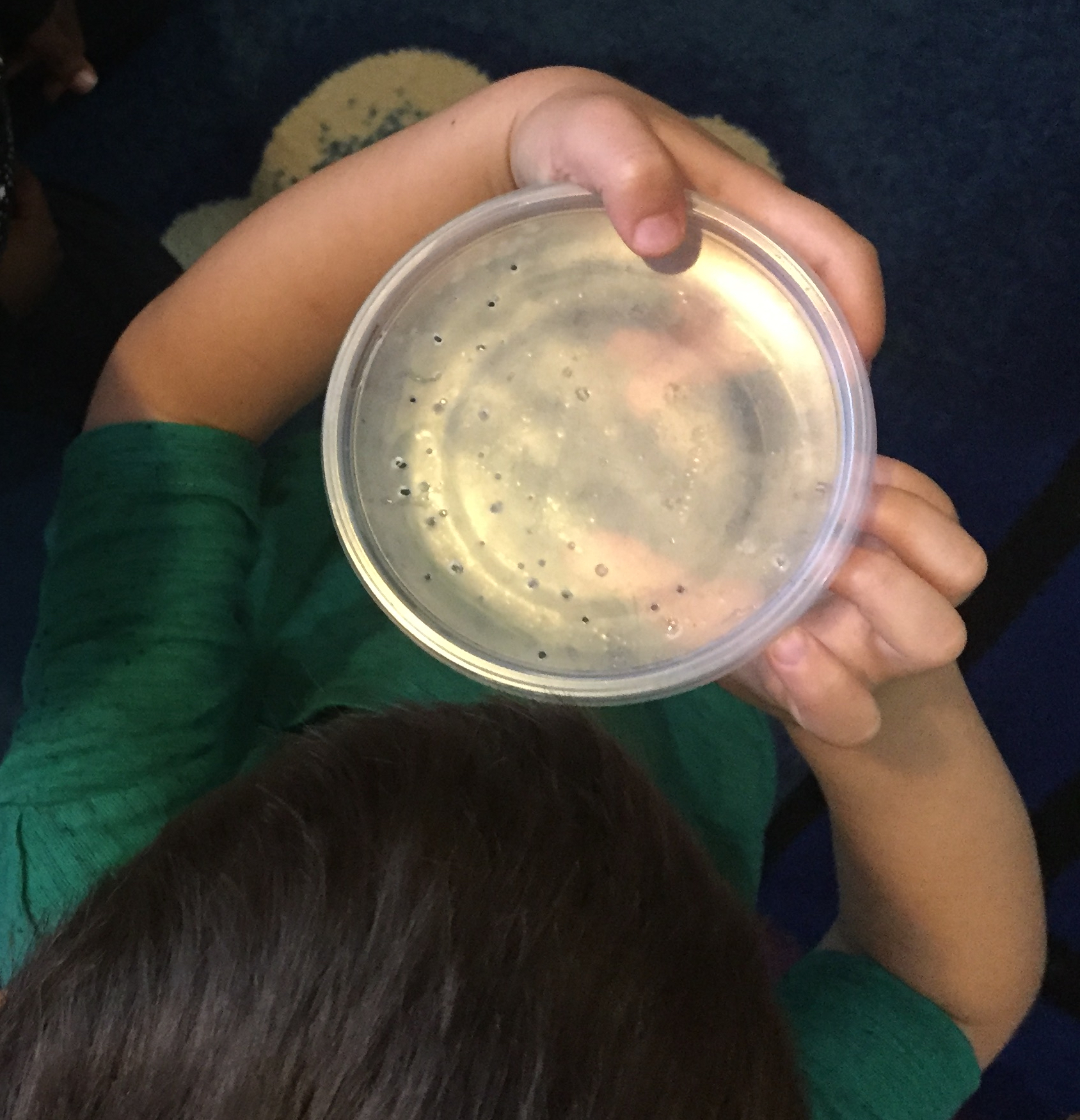Observing children observing bees
By Peggy Ashbrook
Posted on 2019-07-05

Some children feel a kinship with all kinds of living things. They may reach out to touch a bumble bee on a flower or hug a worm too tightly. Touching a bee may be fine if the temperature is so cold it has paused on the flower overnight waiting for morning’s warming sun but I do want children to be aware of the potential hazards of handling small animals.
Promoting caution but not fear while observing small animals supports all children. We can plan opportunities for observation, where children whose affinity for living organisms is still developing can see while maintaining a comfortable distance. Confining small animals in containers for brief periods of observation is one way to provide that distance. Some children eagerly look at books about animals, gaining a familiarity that can make first hand experiences more comfortable.
Observing children, and thinking about what their actions tell us they understand, is the beginning of formative assessment—assessment that informs the direction and progress of teaching. Documenting other ways of knowing children’s thinking, such as, their drawings or conversations during book read-aloud, as well as our observations, guides our next steps in planning lessons. Our collected knowledge and documentation of children’s actions, thinking, and work becomes formative assessment when we “use the information to inform instruction, plan interactions that scaffold learning, and communicate children’s progress to them, their families, and others” (Riley-Ayers in Bohart & Procopio 2018).
Formative assessment systems can be very individual and a strength-based way of documenting and identifying children’s development. Instead of saying, “This child is afraid of bees,” I might say, “This child is cautiously observing bees while maintaining a distance that feels comfortable.” Reviewing the formative assessment documentation supports children’s reflection on their ideas. Hoisington (2016) writes, “Get ALL of the children’s science ideas out on the table, Provide opportunities for children to investigate their ideas, Facilitate children’s reflection on the evidence.” Follow up activities with discussion to find out what children think they know about how animals get the food and other things they need. The NGSS Appendix E: Progressions Within the Next Generation Science Standards describes how children’s beginning understandings become more sophisticated as they grow and learn.
References
Riley-Ayers, Shannon. 2018. Introduction to Spotlight on Young Children: Observation and Assessment by H. Bohart and R. Procopio. NAEYC.
Disclaimer: The views expressed in this blog post are those of the author(s) and do not necessarily reflect the official position of the National Science Teaching Association (NSTA).




